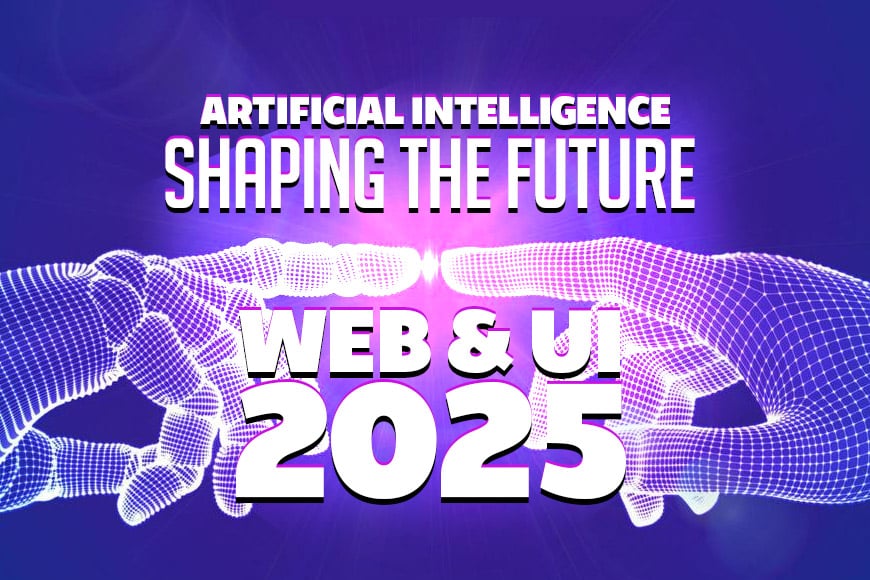The landscape of website design and development is in a state of perpetual evolution in the world of technology, which moves much more quickly than other fields. The strategies that were successful five years ago are no longer relevant, and it is essential for individuals and businesses alike to keep one step ahead of the competition. This article examines the significant stages that have occurred in the development of contemporary websites, the trends that have surfaced, and the ways in which a website can adjust to these changes in order to guarantee that it continues to be effective and relevant. Adapting to Change: The Evolution of Modern Websites

The Early Days of the Web: Static Websites
The original websites were straightforward, static pages that could only be built using HTML. Visitors were provided with information through these websites, which operated as digital brochures and did not offer much in the way of interaction. Because the content was hard-coded, any updates or modifications required direct manipulation of the HTML files. This was the case for whatever purpose. https://diversewebsitedesign.com.au/website-google-packages/
The Limitations of Static Websites
However, despite being revolutionary at the time, static websites had a number of fundamental drawbacks. They were difficult to update, they did not have any features that encouraged user participation, and they offered a terrible user experience in comparison to the standards of today. The need for websites that are more dynamic and interactive became obvious as businesses and customers wanted more from their online presence through the use of the internet.
The Rise of Dynamic Websites
Introducing dynamic content was the next key step in the evolution of websites, which occurred after the introduction of static material. Unlike static websites, dynamic websites retrieved content from databases, which enabled users to have experiences that were both more engaging and more tailored to their specific needs. This movement was largely brought about by developments in server-side scripting languages like as PHP and ASP, and later on, JavaScript frameworks.
Content Management Systems (CMS)
Many content management systems (CMS) came into existence as a result of the proliferation of dynamic websites. Some examples of CMS include WordPress, Joomla, and Drupal. Non-technical users were able to manage website material more easily with the help of these platforms, which eliminated the requirement for them to have knowledge of coding. The use of content management systems (CMS) platforms has become the foundation of contemporary website creation because they enable rapid changes, scalability, and a more responsive approach to online design.

The Mobile Revolution
As the number of individuals using smartphones and tablets increased, the manner in which people visited websites underwent a significant transformation. With the advent of the mobile revolution, there was a huge shift in the design and development of websites, which ultimately led to the implementation of responsive design.
Responsive Web Design
The term “responsive web design” (RWD) refers to a design strategy that guarantees a website retains its appearance and functionality across all devices, including desktop computers and mobile phones. All of this is accomplished through the utilization of CSS media queries, adjustable grids, layouts, and images. Given that mobile traffic has exceeded desktop traffic, responsive design has become a crucial component in order to guarantee that websites offer a consistent experience regardless of the device that is being utilized.
Modern Web Design Trends
Trends in web design are always shifting in tandem with the progression of technology. Minimalism, increased speed, and an emphasis on the user experience are the defining characteristics of modern websites. In recent years, a number of significant trends have evolved, some of which are listed here.
Minimalist Design
The concept of simplicity is central to minimalist design. It places an emphasis on getting rid of items that aren’t necessary, making efficient use of whitespace, and making sure that the content is the primary center of attention. The fact that this trend makes websites easier to read, reduces the amount of time it takes for websites to load, and gives them a cleaner and more professional appearance has contributed to its rise in popularity.
Micro-Interactions
Micro-interactions are animations or design features that are relatively small and unobtrusive, and they are used to convey feedback to the user. For instance, a button that changes color when it is hovered over or a form field that shakes when an error occurs are both perfect examples. The user’s engagement is increased as a result of these interactions, and the website is perceived as being more intuitive and responsive.
Dark Mode
In recent years, dark mode has gained popularity, particularly in conjunction with the proliferation of mobile devices. As an alternative to the conventional light themes, it provides a visually pleasing option and has the potential to alleviate eye strain for users. Not only does the addition of a dark mode option to a website improve the user experience, but it also demonstrates a dedication to keeping up with the latest design trends.
The Role of Speed and Performance
Both the speed and performance of a website are quite important in the modern, fast-paced environment. Site visitors anticipate that webpages will load in a short amount of time, and search engines like Google utilize page speed as a ranking factor. As a consequence of this, optimizing a website for speed is no longer a choice; rather, it is an absolute need.
Optimizing Images and Media
When it comes to improving the speed of a website, optimizing images and media is one of the most efficient ways to do it. Photos that are too large and have not been compressed can drastically slow down a website. It is possible to minimize file sizes without compromising image quality by utilizing tools such as image compressors and contemporary image formats (such as WebP).
Content Delivery Networks (CDNs)
Content Delivery Networks, also known as CDNs, are networks of servers that are dispersed across a number of different locations. It does this by storing copies of the content of your website and then delivering it to users from the server that is geographically nearest to them. This helps to improve performance and reduce load times. material delivery networks (CDNs) are indispensable for websites that cater to a global audience since they provide a quick and dependable access to material regardless of the location of the user.
Future-Proofing Your Website
As a result of the ongoing evolution of the digital landscape, what is considered cutting-edge today can be considered obsolete tomorrow. It is necessary to have a mindset that is future-proofing in order to guarantee that your website will continue to be relevant. This requires you to maintain a level of awareness regarding developing technologies and trends, to update your website on a consistent basis, and to be willing to adjust to new circumstances.
Embracing New Technologies
Artificial intelligence (AI), augmented reality (AR), and voice search are examples of emerging technologies that are beginning to have an impact on the potential of web design in the future. The incorporation of these technologies into your website can provide you with a competitive advantage as well as providing consumers with an experience that is more immersive and individualized.

Regular Maintenance and Updates
It is not a one-time project but rather an ongoing commitment to maintain a website. It is essential to perform routine maintenance and updates on your website in order to maintain its functionality, speed, and security. The update of software, the inspection of broken links, the optimization of material for new devices, and the renewal of content to maintain its relevance are all included in this.
Conclusion
The quick pace of technical innovation is demonstrated by the process by which current websites have developed over time. The evolution of websites has been remarkable, as evidenced by the transition from static pages to dynamic, mobile-responsive designs and, most recently, the incorporation of cutting-edge technologies. It is crucial for everyone who want to retain a strong presence online to take the necessary steps to adapt to these developments. You can guarantee that your website continues to be a valued asset in the ever-changing digital market by embracing new trends, optimizing for performance, and maintaining a focus on the future.





